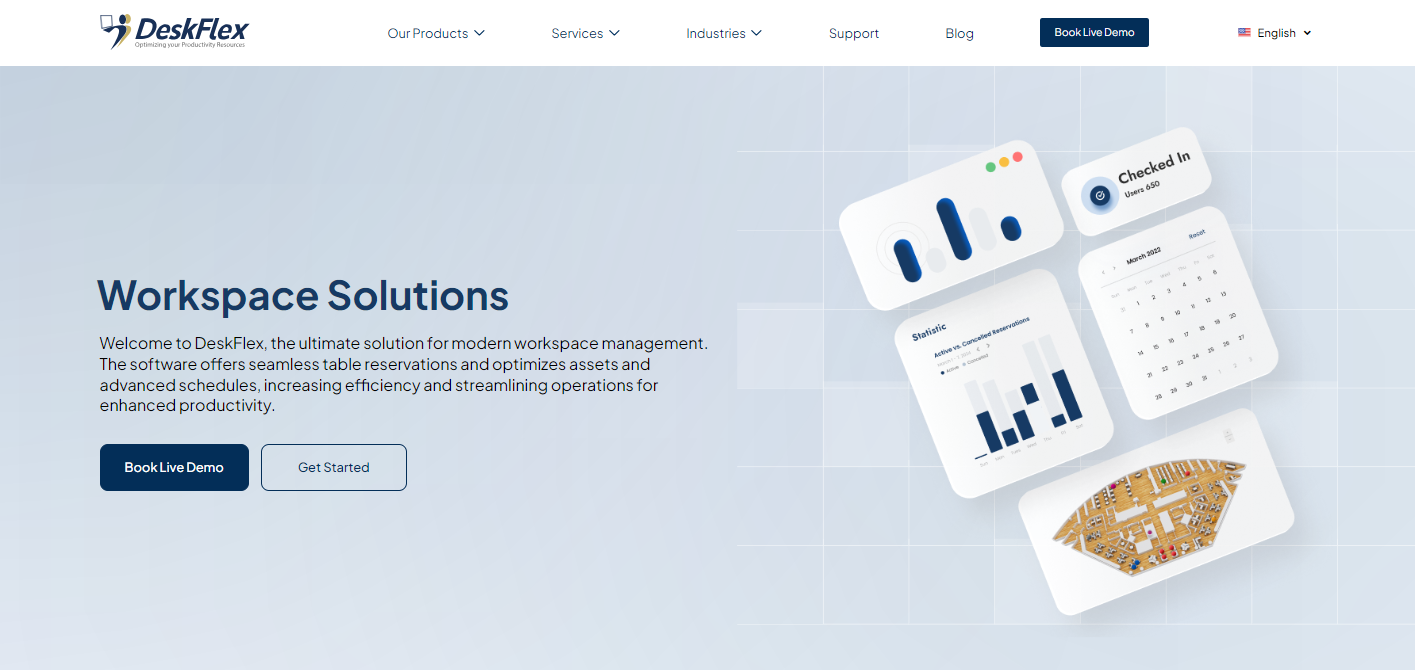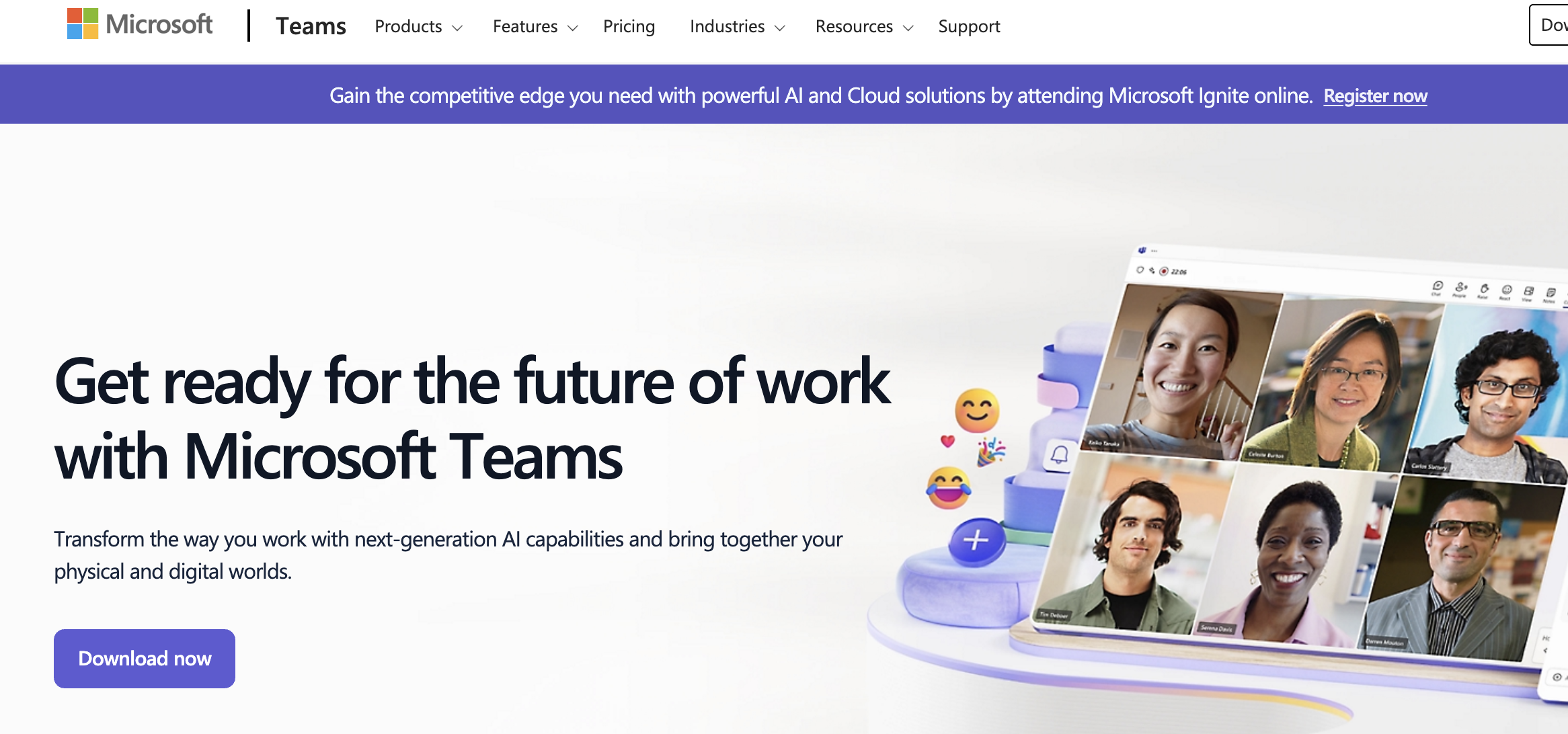
6 Best Workspace Collaboration Tools in 2024
Effective collaboration is more important than ever. As teams increasingly rely on remote and hybrid work setups, workspace collaboration tools have become essential for smooth project execution.
These tools streamline communication, task management, and project planning, allowing teams to work together seamlessly regardless of their location.
Collaboration software boosts productivity, improves team dynamics, ensures project deadlines are met, and facilitates real-time collaboration.
In this article, we will explore the best team collaboration tools for 2024 and the key features that make them indispensable for modern businesses.
What Are Workspace Collaboration Tools?
Workspace collaboration software solutions are designed to enhance teamwork by providing a unified platform for tasks like communication, task management, and file sharing.
These tools allow team members to work together in real time, manage projects, and stay connected smoothly, no matter where they are located.
Team collaboration software plays a key role in modern work environments, especially with the rise of remote and distributed teams.
It helps streamline workflows, reduce email clutter, and ensures everyone stays on the same page.
By integrating multiple functionalities, this software boosts efficiency and productivity across teams.
Types of Collaboration Tools
Whether your team manages large projects, works on shared documents, or stays connected across different locations, having the right tools can make all the difference.
Understanding the various types of collaboration tools can help you choose the best solutions for your team’s needs.
Project Management Tools
Project management tools are essential workspace collaboration tools that help teams plan, execute, and monitor projects.
These project management tools typically include key collaboration features like task assignment, progress tracking, deadline management, and resource allocation.
With the best project management software, teams can manage projects effectively, ensuring everyone stays on the same page.
Creative and marketing teams often rely on these productivity tools to track project progress and meet deadlines efficiently.
Online Collaboration Software
Online collaboration software allows teams to work together on shared documents, presentations, or spreadsheets in real-time, regardless of their location.
These online collaboration tools support seamless file sharing, version history tracking, and collaborative editing, ensuring team members stay aligned.
For remote teams, team collaboration tools like these enhance real time collaboration, making it easier to manage project tasks, brainstorm ideas, and track progress.
By using top online collaboration tools, teams can boost productivity while reducing the need for emails and repetitive updates.
Communication and Collaboration Platforms
Communication and collaboration platforms like Microsoft Teams and Google Workspace apps combine messaging, video conferencing, and document sharing into one unified platform.
With advanced features such as third-party app integration, these platforms make it easy for remote collaboration and employee engagement.
The best collaboration software also provides mobile apps that allow team members to stay connected on the go, improving flexibility for remote and small teams. With tools like these, teams can enjoy seamless collaboration no matter where they are.
6 Best Collaboration Tools to Consider in 2024
Choosing the right online collaboration tools is crucial for ensuring efficient teamwork, smooth project management, and clear communication, especially as remote and hybrid work continues to rise.
From team collaboration tools like project management tools to real-time communication solutions, these tools help teams stay organized, track progress, and manage tasks seamlessly.
1. DeskFlex
DeskFlex is a comprehensive office space and resource management tool that integrates collaboration features to enhance workplace efficiency.
Perfect for hybrid and remote work environments, DeskFlex offers desk booking, room scheduling, and collaboration tools in one platform.
It simplifies workspace management by allowing employees to reserve desks, meeting rooms, and other resources in real time, ensuring optimal use of office spaces.
The software also integrates with various communication and project management tools to streamline collaboration among teams regardless of their physical location.
DeskFlex’s user-friendly interface and robust reporting capabilities help teams stay organized, whether they are working in-office or remotely.
Key Features:
- Real-time desk and room booking system
- Integration with Microsoft Teams and Google Workspace for seamless collaboration
- Advanced reporting for space utilization and resource management
- Easy-to-use interface with mobile access for on-the-go management
- Customizable workflows for hybrid teams
Best For:
Hybrid workplaces, facility managers, and businesses focused on optimizing office space while maintaining strong team collaboration.
2. Microsoft Teams
Source: Microsoft Teams
Microsoft Teams is a communication and collaboration platform that combines file sharing, chat, and video meetings. It is suitable for businesses of all sizes, especially for team collaboration.
It serves as a central workspace where teams can communicate in real-time, share documents, and do real-time collaborate on projects seamlessly and for online brainstorming sessions.
Microsoft Teams also integrates deeply with Microsoft Office apps, allowing users to collaborate directly with Word, Excel, and PowerPoint.
Microsoft Teams ensures smooth communication for remote or hybrid teams, especially with advanced security features to protect business data.
Microsoft Teams also supports breakout rooms for virtual meetings, making it suitable for large enterprises that are managing multiple projects.
Key Features:
- Unified chat, video, and file-sharing platform
- Integration with Microsoft apps (Word, Excel, OneNote)
- Breakout rooms for virtual meetings
- Customizable team channels for project-specific communication
- Strong security protocols for data protection
Best For:
Distributed teams, software developers, and large businesses managing multiple projects.
3. Google Workspace
Source: Google Workspace
Google Workspace is a project management app that offers tools like Gmail, Google Docs, Sheets, Slides, and Drive, all of which integrate smoothly for real-time teamwork and collaboration.
Google Workspace allows team members to collaborate in real-time on documents, spreadsheets, and presentations while providing secure cloud storage with Google Drive.
The platform’s user-friendly interface ensures seamless navigation, making it easy for users to access files and collaborate efficiently.
This interface is designed for intuitive use, allowing small teams and large organizations working remotely to integrate tasks and communication effortlessly, regardless of location.
Workspace’s real-time collaboration features allow multiple users to work simultaneously on files, which is designed for improving task management efficiency
Key Features:
- Real-time editing across all apps (Docs, Sheets, Slides)
- Google Meet for video conferencing and virtual collaboration
- Version history tracking to monitor file changes
- Secure cloud storage with Google Drive
- Email integration with Gmail for easy communication
Best For:
Small to medium-sized teams, remote workers, marketing teams, and businesses needing comprehensive collaboration.
4. Slack
Source: Slack
Slack is known for its user-friendly communication and collaboration features. It allows teams to communicate through organized channels, providing a structured way to manage team conversations, projects, and updates.
Slack integrates with other platforms, such as Google Drive, Trello, and Dropbox, allowing easy file sharing and task management directly within the app.
Its intuitive design makes it a favorite for teams needing a flexible, communication-focused collaboration tool.
Key Features:
- Organized team channels for focused discussions
- Direct messaging and file-sharing options
- Integrations with tools like Google Drive, Trello, and Dropbox
- User-friendly interface with customizable notifications
- Workflow automation for task management
Best For:
Creative teams, remote workers, marketing teams, and distributed teams need accessible communication.
5. Trello
Source: Trello
Trello is a task and online collaboration software that makes organizing and tracking progress easy.
Using boards and cards, its visual layout simplifies complex projects by breaking them down into individual tasks.
Trello’s drag-and-drop interface allows teams to assign tasks, set deadlines, and track project status effortlessly.
It’s suitable for teams seeking a simple yet effective tool for managing tasks and collaborating on projects in a visual format.
Trello’s intuitive design significantly enhances workplace collaboration. It fosters transparency and helps team members stay aligned with project goals.
Key Features:
- Visual board system with customizable task cards
- Pre-made templates for quick project setup
- Integration with Google Drive, Slack, and other tools
- Drag-and-drop interface for easy task management
- Ability to assign deadlines and monitor task progress
Best For:
Freelancers, small businesses, creative teams, and marketing teams need simplified project management.
6. Asana
Source: Asana
Asana is an online collaboration tool designed to track tasks, assess project progress, and manage productivity.
It helps teams manage complex workflows by breaking projects into smaller, manageable project tasks for the best online collaboration among the team.
With custom workflows, project managers can assign responsibilities, monitor deadlines, and ensure that everyone is on the same page.
Asana’s detailed task dependencies and real-time updates make it perfect for teams managing multiple projects and timelines simultaneously.
Key Features:
- Custom workflows for task management and delegation
- Task dependencies for managing timelines and priorities
- Integrations with popular third-party apps like Google Drive, Slack, and Dropbox
- Project tracking with real-time updates
- Reporting tools to monitor project progress and productivity
Best For:
Project managers, remote teams, software developers, and businesses managing large projects.
If you want to learn more about other software and collaboration tools, check these, Envoy alternatives, Skedda alternatives, and Robin alternatives.
Key Features of Effective Project Management Tools
Modern collaboration tools need to offer more than just basic collaboration features to maximize team collaboration and productivity.
Key functionalities such as real-time collaboration, robust task management, and seamless file sharing help teams stay organized and connected.
Features like video conferencing and mobile accessibility ensure flexibility, allowing teams to communicate across different devices and locations.
Advanced security features and third-party app integrations also play a significant role, keeping data secure while enhancing workflows by connecting various tools and platforms.
Real-Time Collaboration
Real-time collaboration is essential for team collaboration tools to keep teams updated instantly.
Features like live document editing, screen sharing, and feedback loops allow seamless teamwork, especially during brainstorming sessions.
These tools speed up project management for creative teams, as input from stakeholders can be received and acted upon immediately.
These features are especially valuable for brainstorming sessions, where immediate input from different stakeholders is necessary to move projects forward efficiently.
Task Management
Task management is a crucial feature of a collaboration tool, ensuring every team member knows their tasks and deadlines.
Tools like Trello and Asana enable teams to assign tasks, manage project timelines, and track project progress visually. This helps teams stay organized across any online collaboration tool.
Task prioritization and notifications help avoid missed deadlines, while project timelines and dependencies help teams stay on track with complex workflows.
File Sharing & Storage
File sharing and secure cloud storage services are central to workplace collaboration.
Platforms like Google Drive and Microsoft OneDrive offer collaborative features such as version history tracking, ensuring team members are always working on the latest document version.
This reduces back-and-forth emails and ensures easy access for remote workers. Real-time access to files, coupled with a record of all changes, prevents duplication and streamlines the collaboration process, fostering a more efficient workflow.
Video Conferencing Tools
Platforms like Microsoft Teams and Google Meet provide video calls, screen sharing, and real-time chat, making it easy for teams to work together from different places.
Video conferencing is now essential for teams working remotely or in hybrid settings.
These tools help to maintain connection and productivity for both remote groups and marketing teams.
For remote employees, these tools bridge the communication gap by making face-to-face meetings possible despite geographical distances.
Mobile Apps
For teams working on the go, mobile apps are important in enabling seamless team collaboration from any location.
Apps like Slack, Trello, and Google Workspace offer user-friendly, mobile-optimized interfaces for managing projects, checking task statuses, and joining virtual meetings, ensuring that team members remain productive wherever they are.
As remote and on-the-go work become increasingly common, mobile apps provide flexibility. Team members can access critical updates, attend meetings, and collaborate on tasks from their smartphones.
Security
Advanced security is a critical consideration in any collaboration platform.
Strong encryption, multi-factor authentication, and secure access controls are necessary to protect cloud storage data and sensitive communications.
Tools like Google Workspace and Microsoft Teams offer robust security features to protect against breaches.
Secure file sharing and communication are essential, especially in industries with strict data privacy requirements.
Integration
Seamless integration with third-party apps like Google Workspace, Microsoft Office, and Zapier is an important feature of effective team collaboration software.
These integrations simplify workflows by syncing tasks, files, and communication across platforms. This reduces inefficiencies and helps project management tools work smoothly together.
How to Choose the Best Online Collaboration Tool for Your Team
Choosing the right online collaboration tool can significantly impact your team’s productivity and communication.
- Assess your team’s needs: Start by analyzing their core needs. Does your team require robust real-time collaboration, or is file sharing and task management more important? Identify specific functions like video conferencing, project tracking, or mobile accessibility that align with your team’s workflow.
- Evaluate collaboration features: Focus on collaborative features such as document sharing, task assignment, or project timelines. The tool should enhance team productivity, streamline workplace collaboration, and be user-friendly for your team members.
- Security considerations: Data security is crucial for distributed and remote teams. Look for tools with features like end-to-end encryption and multi-factor authentication to safeguard sensitive information.
- Scalability and pricing: Choose a collaboration tool that meets your current requirements and scales as your team grows. Ensure that the platform offers flexible pricing so you can expand without significant cost increases as your needs evolve.
How Collaboration Software Enhances Remote and Hybrid Team Productivity
As remote and hybrid work models become more common, leveraging the best online collaboration tools for project management is essential for maintaining productivity and ensuring smooth workflows.
These tools play a pivotal role in keeping teams connected, enabling efficient communication, task delegation, and project tracking.
Streamline Communication
Effective communication is crucial for remote and hybrid teams. With instant messaging, file sharing, and video conferencing capabilities, online collaboration tools enable seamless interaction between team members.
These team collaboration tools keep everyone aligned, reduce email clutter, and allow real-time exchanges. Video calls, screen sharing, and chat threads make it easy for team members to collaborate regardless of location, making communication faster and more efficient.
Task Management Tools
Collaboration software and online collaboration tools with integrated project management features help managers delegate tasks and monitor project progress.
These platforms enable team leaders to assign tasks, set deadlines, and track completion. Tools like Gantt charts, Kanban boards, and notifications keep everyone aware of priorities and deadlines.
Project management tools allow team members to visualize their work, enhancing accountability and productivity.
Cloud Storage and Collaboration
With cloud-based online collaboration tools, teams can access documents and files from anywhere at any time.
Real-time editing allows multiple users to collaborate simultaneously, reducing the need for back-and-forth emails.
The ability to store files securely and access them on demand boosts team collaboration and ensures that everyone is working with the latest information.
Engagement and Collaboration Features
Collaboration software often comes equipped with features that promote employee engagement and collaboration.
From virtual brainstorming sessions to shared workspaces, these platforms encourage active participation. Features like task comments, shared calendars, and team discussions foster a sense of community among distributed teams.
These collaborative features are particularly beneficial for creative teams, helping to drive innovation and improve overall team performance.
How Collaboration Tools Enhance Employee and Workspace Efficiency
The best collaboration software significantly improves both employee efficiency and workspace efficiency by streamlining communication, project management, and resource utilization.
These tools centralize information and communication, reducing time spent searching for emails or documents with their user-friendly interface.
By providing features like real-time updates, document sharing, and project management apps, collaboration platforms ensure that teams stay aligned, improving task execution and decision-making.
Employees can easily track project progress, manage their time, and collaborate without bottlenecks, fostering a more productive work environment.
Additionally, workspace efficiency is enhanced through tools like meeting room booking systems and desk reservation features, ensuring optimal resource usage.
Who Can Use Collaboration Tools?
Different industries have unique collaboration needs, and tailored digital collaboration tools can significantly enhance efficiency and productivity.
Healthcare
Healthcare providers benefit from secure collaboration platforms that comply with regulations like HIPAA. Tools that enable real-time communication between doctors, nurses, and staff while securely sharing patient data are essential.
Features like telemedicine integration and medical record sharing improve patient care coordination.
Using project management software allows the entire team to organize tasks, streamline workflows, and manage administrative responsibilities such as scheduling and patient follow-ups.
Education
Educational institutions utilize collaboration tools for virtual classrooms, lesson planning, and student engagement.
Platforms offering real-time document editing, video conferencing, and document sharing create interactive learning environments.
Tools like Google Workspace for Education and a project management app allow teachers to share resources, manage assignments, and track student progress efficiently.
These tools not only streamline communication between educators and students but also foster collaborative learning, making the educational process more dynamic and organized.
IT & Software Development
Tools with features like code version control, project management, collaboration apps, and bug tracking are vital for IT and software teams.
Platforms like Jira and GitHub enable developers to manage tasks, collaborate on code, and track bugs efficiently, ensuring timely project delivery.
A project management tool helps streamline workflows by organizing tasks, assigning responsibilities, and tracking progress.
This makes it easier for development teams to stay aligned and meet deadlines across complex software projects.
Tailoring collaboration tools to meet industry-specific needs allows teams to maximize productivity and streamline workflows, making these platforms indispensable across various sectors.
Why DeskFlex Is the Best Online Collaboration Tool?
DeskFlex stands out as a top online collaboration software for businesses managing hybrid and remote workforces. Here’s why:
Real-Time Booking and Resource Management
DeskFlex lets users reserve desks, meeting rooms, and resources in real time. This feature prevents scheduling conflicts and maximizes workspace utilization, ensuring smooth operations regardless of team size.
Hot-desking and Flexible Workspaces
Ideal for hybrid models, DeskFlex’s hot-desking enables employees to book workstations or meeting rooms as needed.
This flexibility allows teams to collaborate effortlessly, whether working remotely or in-office, enhancing productivity by giving employees control over their work environments.
Seamless Integration with Third-Party Apps
DeskFlex integrates with widely used platforms like Microsoft Outlook, Office 365, and Zapier.
These integrations allow for easy syncing of appointments and task assignments, minimizing the need for manual coordination and reducing errors.
Collaborative Features
Teams can manage projects, communicate, and schedule meetings directly through DeskFlex. With its streamlined workflows, tasks are easier to delegate and track, ensuring that all team members are on the same page.
Advanced Analytics and Reporting
DeskFlex provides valuable insights into workspace usage. Managers can assess desk occupancy, track meeting room utilization, and analyze employee booking patterns to make informed decisions about space optimization and collaboration needs.
This data-driven approach helps identify bottlenecks and improve team productivity.
Enhanced Security
DeskFlex prioritizes security with features like multi-factor authentication, ensuring that sensitive company data and employee information are always protected.
This is especially important for distributed teams working across different locations.
Mobile and Remote Accessibility
DeskFlex’s mobile app allows users to manage their bookings, access resources, and participate in meetings on the go. This mobility fosters better collaboration for teams that aren’t confined to a single office space.
With DeskFlex, companies benefit from streamlined collaboration tools, improved project management, and optimized space usage, making it an all-in-one solution for workplace efficiency.
Its ability to adapt to various working styles—remote, hybrid, or in-office—makes it the best online collaboration software for modern teams.
Ready to optimize your team’s collaboration and workspace? Book a demo with DeskFlex today to see how it can transform your business operations!
FAQs About Workspace Collaboration Tools
What is a workspace collaboration tool?
A workspace collaboration tool is software that enables teams to work together by offering features like real-time communication, file sharing, and task management. These tools streamline workflows, allowing remote or hybrid teams to stay connected and collaborate efficiently.
What is the most common workplace collaboration tool?
Microsoft Teams is one of the most common workplace collaboration tools. It integrates chat, video conferencing, file sharing, and project management, making it a go-to platform for businesses of all sizes.
What are workspace tools?
Workspace tools are digital solutions used to manage communication, project planning, and collaboration within a team or organization. These tools typically include project management software, communication platforms, and file-sharing solutions to help teams work more efficiently.
How to use Google Workspace for collaboration?
To use Google Workspace for collaboration, teams can share and edit documents, spreadsheets, and presentations in real time using apps like Google Docs, Sheets, and Slides.
Google Drive allows secure file storage and sharing, while Google Meet facilitates virtual meetings. Integration across the platform ensures seamless collaboration and task management.























































